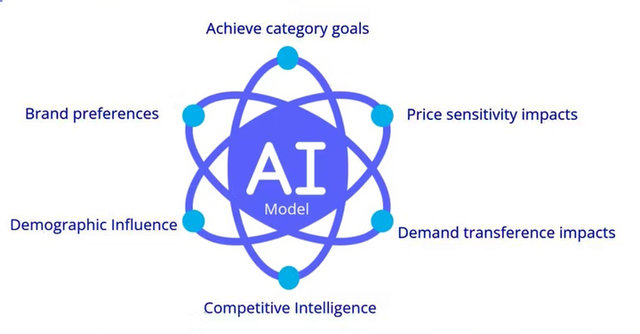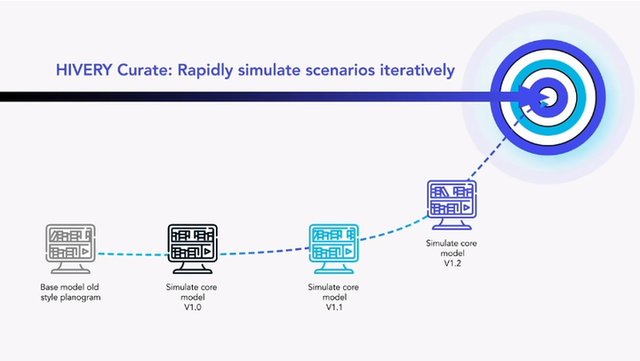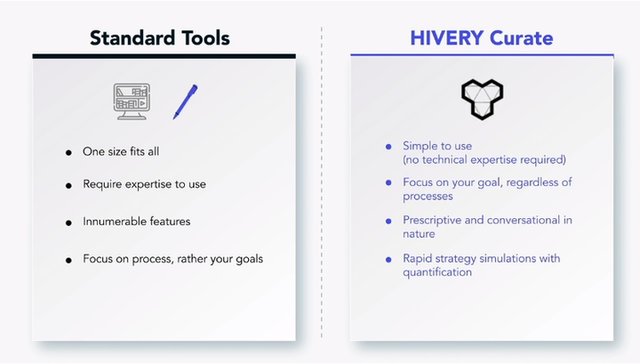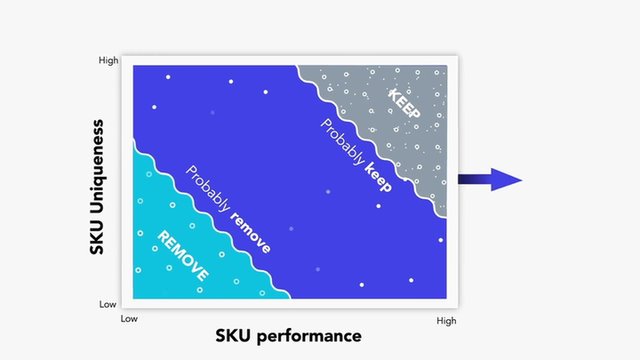Grocery shoppers continue confronting frustrating out-of-shelf situations. Gaps in On-Shelf Availability and On-Shelf Relevancy result in lost volume, lost baskets, and lost faith among shoppers. Food retailers and suppliers need to work together more effectively to keep shelves properly stocked and relevant—in stores and on-line.
Shelf relevance and getting right store clustering strategies is critical to success in the current cut-throat environment. Today Retailers, grocers and brand marketers across the board are taking steps to streamline assortments and making the shelves ‘locally relevant’ and ‘effectively merchandised.’ Simply put: hyper local retailing is gaining relevance.
“Hyper-local across all stores presents a massive opportunity,” says Jason Hosking, co-founder and CEO of HIVERY. According to a study by IHL Group, shelf relevance costs retailers collectively nearly $1.8 trillion globally. In other words, same store sales could increase 10.3% if ‘shelf relevance’ is taken care of. ‘Overstocking’ alone is costing the North American retail industry $135 billion.
It’s a no brainer that retailers who get the assortment right enjoy more sales, higher gross margins, leaner operations, and most importantly, more loyal customers. Assortment planning is rarely a simple process for retailers. Currently, getting the right cluster and assortment strategy is an extremely long and ineffective process—it is based on ‘averages of averages’ and some gut feel. Instead of using analytical tools and relying on Business intelligence (BI) or data science teams to make effective decisions, grocery retailers too often rely on in-store teams and external suppliers to make decisions about what to put on the shelf, how much of that UPC/SKU to stock, and how to price the items. Such an approach takes weeks if not months. Retailers, grocers and their suppliers need a fundamental new thinking and approach. “As the volume, variety, and velocity of datasets grow and the complexity of merchandising rules and constraints become diverse, traditional methods and solutions designed in the 1980s simply cannot handle such problems. It requires a new way of thinking, a new approach,” says Dirk Herdes, Vice President of Retail, HIVERY.
“Answer lies in AI,” exclaims Hosking. Unlike traditional “merchandise analytics’ solutions, AI puts the power in back in the hands of the operational folks that need to make the decision. With AI-fueled tools, chief merchandising offers, senior retail buyers can rapidly conduct cluster and assortment strategy simulation and quickly determine possible action to take.

HIVERY Curate. This Is How It Works.
Uncovering Shopper Insights using AI Models


In 2015, five Australian technopreneurs—Franki Chamaki, Jason Hosking, Charles Gretton, Matthew Robards, and Menkes van den Briel—came together to build highly advanced AI system on bleeding edge technologies from the machine learning, operations research and design discipline. Their hypothesis was that artificial intelligence could learn from the data, then make space and assortment recommendations that would increase sales, reduce costs, and maximize profitability from the entire fleet. Founded on the vision that ‘Data Has A Better Idea’, HIVERY is ushering a new era of digital transformation in retail with its next-generation assortment strategy simulation and optimization technologies.
Using machine-learning approaches, HIVERY’s flagship product Curate seeks to use hyper-localized product and space recommendations and generate actionable insight. It takes into consideration the various merchandising rules and constraints in order to get more relevant and effectively merchandise. Using store-level data, HIVERY Curate enables retailers, grocers and consumer packaged goods companies to quickly simulate assortment strategies, then fine-tune those simulations and generate space and assortment-aware planograms for execution. HIVERY Curate's AI-driven, analytics-based assortment optimization is simple to use and saves time for buyers, sales category managers, and category advisers.
HIVERY gives grocery retailers a whole new way to scale, speed and precision. Being an AI-fueled platform, HIVERY helps grocers take advantage of the speed empowering them to make faster decisions and turn those into execution. Given that grocers have limited capital resources and are required to ensure every decision provides a return on investment, HIVERY helps them gain precision in order to be really targeted in their execution. HIVERY also fosters transparency while grocers collaborate with suppliers so that all parties understand the "why" of the decision made.
Next Generation merchandising tools such as HIVERY aim to make category and merchandising management more effective by using the wealth of datasets that are available today. With sophisticated machine learning algorithms, it drives merchandising decisions to a level of precision not possible with current offerings. It essentially combines the tasks of assortment analysis, category assessment, assortment optimization, and planogram development into one category, so that managers can focus on what humans are good at; being more strategic, rapid, and transparent in their assortment decisions.
New Approach, New Thinking
Revolution Takes Birth
HIVERY gives grocery retailers a whole new way to level of scale, speed, precision. Being an AI-fueled platform, HIVERY helps grocers take advantage of the speed empowering them to make faster decisions and turn those into execution. Given that grocers have limited capital resources and are required to ensure every decision provides a return on investment, HIVERY helps them gain precision in order to be really targeted in their execution. HIVERY also fosters transparency while grocers collaborate with suppliers so that all parties understand the "why" of the decision made.
With HIVERY, for the first time ever, retailers and grocers have AI or a complete “data science department” essentially in their pocket and can run unlimited strategy simulation, find the right answers and execute that strategy rapidly. In matter of few minutes, retailers can find answers to strategy questions like:
- What is the value of going store-specific?
- What is the opportunity to re-optimize the existing clusters strategy?
- What is the incremental revenue impact of a more granular clustering approach?
- What is the ideal clustering strategy for those stores? What is the ideal store count within each cluster group?
With HIVERY, for the first time ever, retailers and grocers have AI or a complete “data science department” essentially in their pocket and can run unlimited strategy simulation, find the right answers and execute that strategy rapidly.
Curate in Action

Dirk Herdes, VP of Retail, HIVERY
For years retailers and grocers have been working with "averages of averages" using traditional methods and practices. Lack of relevant tools in market only added to their inability to conduct "bottom up" analysis. A bottoms up approach to clustering actually identifies new shopper segment, ones not based on traditional methods like “demographics”. It is fundamentally more granular approach and therefore identifies different shopper segments and their associated preferences to products in stores, and hence their own elasticity of demand. This impacts economic concepts such as “demand transference”. Using AI with bottoms up datasets allows retailers and grocers to understand the impact of adding new SKU/UPC or removing existing products to the category space, all at individual store level.
HIVERY utilizes store-level data and looks at shoppers purchase decision at the shelf level. It then uncovers hidden insights about that shopper in that specific store and starts to unlock new growth opportunities not possible today. HIVERY considers broad demographics and brand preferences and then simulates various cluster strategies and then pushes down what the retail execution should look like. HIVERY does so by literally exporting the planograms into say JDA/Blueyonder for execution of that AI-designed cluster strategy. The unique part is this: HIVERY will consider retailers category goals (i.e., grow revenue and/or volume), consider any merchandising rules or constraints and does this all in minutes not months. “With the use of AI models in HIVERY Curate, you don't want to think about analytics and execution as two separate things. AI allows you to look at them together and really accelerate how you operationalize those insights,” says Herdes.
HIVERY has solved business problems in the retail and FMCG sectors in Australia, the US, Japan and China. Retail giants such as Walmart, Coca Cola, and Red Bull are using it. Leveraging HIVERY Curate, one of the leading retailers saw 9% annual revenue growth adding nearly $23 million in incremental revenue opportunities to its bottom line—that’s literally money left on the table!
One of the top grocery retailers used HIVERY Curate to optimize their assortment mix for each store and saw a pretty significant gain in number of days of supply (DOS). Optimization meant that the grocer could granularly look at each store and rank by order, each SKU/UPC propensity to sell and recommend what to keep, delete or add. Using the HIVERY platform gave the retailer precise insights. For instance, the analysis showed 40 specific stores had 30% or greater opportunity for improvement. Such precise insights enable retailers to make decisions like store-specific assortment that they would otherwise not be able to make. What’s notable is that the HIVERY platform threw up this single insight in matter of 20 to 30 minutes. The retailer did not have to rely on any data teams or analytical department.
The traditional "top down" non-AI approach meant the client worked with 7 Clusters, drawing 515 Planograms with 4.3 DOS and around $250 million in weekly revenue. With HIVERY Curate and using “bottoms up” AI approach, the client was able to analyze in minutes (as opposed to spending weeks or months trying to go through that analytics) and seamlessly execute the strategy. The client also was able to simulate different scenarios, 5, 10, 15, all the way up to 30 different clusters and study the foreseeable impact. At the end, with lesser number of planograms, the client was able to achieve 4.5% revenue growth and improve days of supply.
“We are literally democratizing AI in the hands of operators and decision makers,” notes Hosking. AI models used by HIVERY allows its clients to augment the existing process and data while managing complexity. Leveraging AI, HIVERY has made it possible for retailers to achieve locally relevant planograms. What was time-consuming and complicated to achieve, has been made possible. HIVERY is fundamentally changing the way CPG companies, retailers and grocers collaborate with regard to assortment and space decisions. Data indeed has a better idea about store clusters and making hyper-local a reality indeed!
The New Reality
Alexander Levashov
Alexander Levashov is a Managing Director of Magenable. He has an undergraduate degree in IT/business and MBA from Melbourne Business School. Alex has over 20 years of experience in digital and finance, delivering solutions to such organizations as USAID, Bendigo and Adelaide bank, ACMA prior to founding Magenable.














